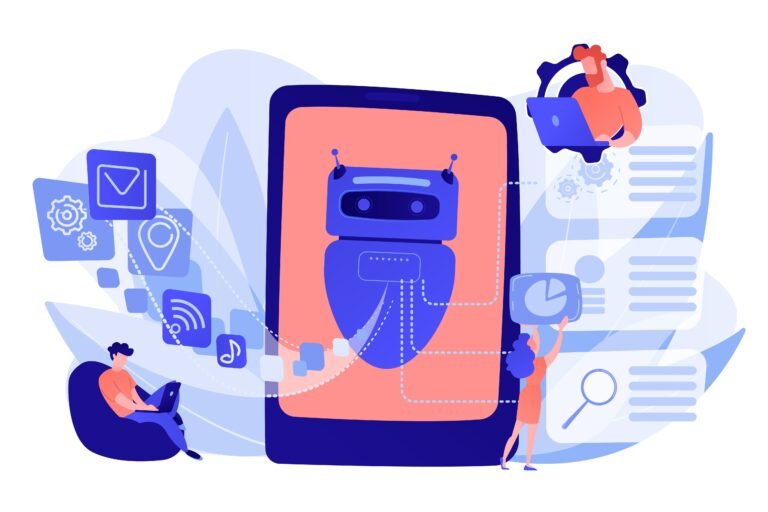Across Australia, from bustling city centres to thriving local communities like Mickleham, Victoria, small businesses are recognising the immense potential of Artificial Intelligence (AI). Studies show that a staggering 83% of Australian SMEs believe AI will significantly impact their business within the next year. However, a concerning statistic reveals that a massive 76% are currently navigating this technological shift without a formal Small Business AI Strategy. This gap between understanding AI’s power and having a plan to harness it can lead to wasted resources, fragmented efforts, and ultimately, missed opportunities.
This article provides a clear, concise 3-Step Roadmap designed specifically for Australian small businesses to move from AI curiosity to strategic success.
Table of Contents
Step 1: Identify Your “AI Opportunity Zones” 🔍
The first step in crafting your small business AI strategy isn’t about diving headfirst into the latest technology. It’s about identifying the specific areas within your business where AI can provide the most significant impact and address existing pain points.
Analyse Your Operations: Take a close look at your daily tasks and processes. Where are bottlenecks occurring? Which tasks are repetitive and time-consuming? Where could you improve efficiency or gain deeper insights from your data? Think about areas like customer service, marketing, sales, operations, and even finance.
Talk to Your Team: Your employees on the ground often have the best understanding of where AI could alleviate burdens or improve workflows. Encourage them to identify tasks that could be automated or enhanced with AI tools. Perhaps your customer service team in Mickleham is overwhelmed with repetitive inquiries that a chatbot could handle.
Start Small and Be Specific: Don’t try to solve every problem with AI at once. Choose one or two specific areas where a targeted AI solution could deliver a clear and measurable benefit. For example, instead of “improve marketing,” focus on “automate social media posting” or “personalise email marketing.”
Consider Low-Hanging Fruit: Look for readily available and affordable AI tools that address your identified needs. Many platforms now integrate AI features into their existing offerings (e.g., AI-powered email marketing, content creation assistants).
Step 2: Chart Your AI Course: Selecting the Right Tools and Setting Realistic Goals 🧭
Once you’ve identified your “AI Opportunity Zones,” the next step is to research and select the AI tools that best align with your needs and resources.
Do Your Research: Explore the landscape of AI-powered solutions relevant to your chosen areas. Look for tools that are user-friendly, offer good customer support (ideally within Australia), and have pricing models suitable for small businesses. Consider free trials to test the waters before committing.
Focus on Practical Applications: Prioritise tools that offer tangible benefits and integrate smoothly with your existing systems. If you’re looking to automate social media, explore platforms with built-in AI scheduling and content suggestion features. If you want to improve customer service, research chatbot solutions that can be easily integrated into your website.
Set Realistic Goals and KPIs: What specific outcomes do you expect to achieve with AI? Define measurable Key Performance Indicators (KPIs) to track your progress. For example, if you implement a chatbot, your KPI might be a reduction in customer service response times or an increase in resolved queries.
Consider Security and Privacy: Especially when dealing with customer data, ensure that any AI tools you choose have robust security measures and comply with Australian privacy regulations. This is a critical consideration for building trust with your customers.
Don’t Forget the Human Element: AI is a tool to augment human capabilities, not replace them entirely. Plan how your team will work alongside AI, and identify any training or upskilling that may be required.
Step 3: Implement, Iterate, and Evaluate Your AI Strategy 🌱
The final step is to roll out your chosen AI solutions, monitor their performance, and be prepared to adapt as you learn what works best for your Australian business.
Start with a Pilot Project: Implement your AI solution in a limited scope first to test its effectiveness and identify any potential issues before a full-scale rollout.
Train Your Team: Ensure your employees are comfortable using the new AI tools and understand how they fit into your overall processes. Provide adequate training and support.
Monitor Performance and Track KPIs: Regularly review your pre-defined KPIs to assess whether your AI implementation is delivering the expected results. Use analytics dashboards to track key metrics.
Seek Feedback and Iterate: Gather feedback from your team and your customers on their experiences with the AI-powered solutions. Be prepared to make adjustments and refine your approach based on what you learn. Your initial AI implementation in Mickleham might need tweaking based on local customer feedback.
Stay Informed and Adapt: The field of AI is constantly evolving. Stay up-to-date on the latest advancements and be prepared to explore new AI opportunities that could benefit your business in the future.
The Role of IT Business Solutions: Powering Your Business Growth
Navigating the world of AI can be complex, and ensuring your technology infrastructure is ready to support AI adoption is crucial. IT Business Solutions: Powering Your Business Growth can provide invaluable assistance in selecting the right AI tools, integrating them with your existing systems, ensuring data security and compliance, and providing ongoing support and maintenance. A strong IT partner can help you overcome the technical hurdles and maximise the benefits of AI for your Australian small business.
Conclusion
Embarking on your AI journey doesn’t need to be daunting. By following this 3-Step Roadmap – identifying your opportunities, charting your course, and implementing strategically – your Australian small business, whether located in Mickleham, Victoria, or anywhere across the country, can effectively leverage the power of AI to boost efficiency, enhance customer experiences, and drive sustainable growth. The key is to be intentional, focused, and to remember that AI is a powerful tool best used with a clear strategy in mind.

